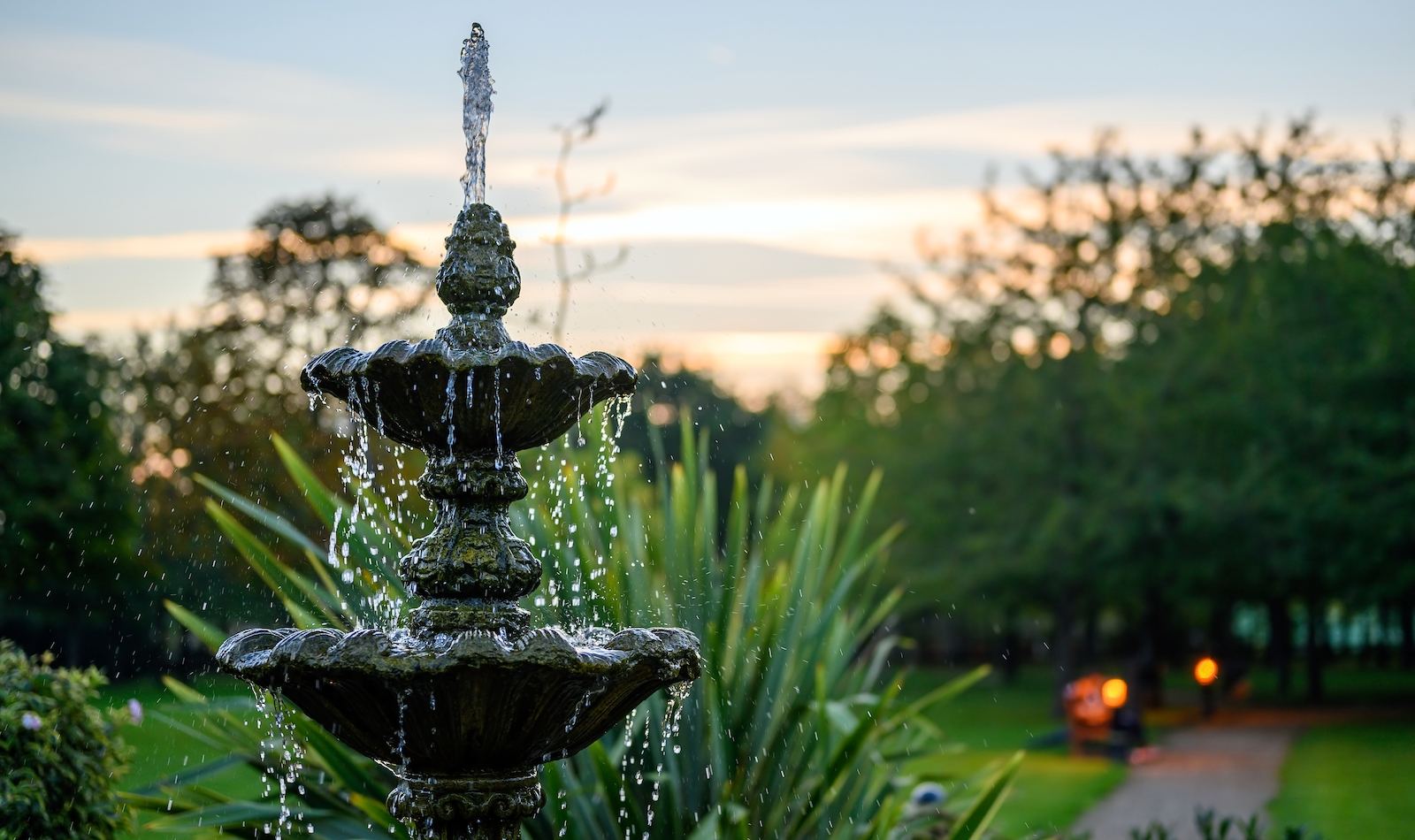Call Us On
03 7046 5568
Mon-Fri 9AM-5PM

Water features come in many types and styles. However, they all share a few features, including bowls or tiers, a base reservoir to hold water, a water pump and tubing.
A water feature recirculates and recycles water to create a waterfall effect. Water usually flows from the top of the fountain, cascading down to its tiers before falling onto the reservoir. A pump sucks the water from the base to be pushed upwards again via a tube.
The reservoir can appear differently depending on the style or type of water fountain and if you're using a garden pond. However, the reservoir is nearer to the fountain's bottom, and the water pump usually sits at the reservoir.
The Monteray with Classical Pond below is a type of classical tiered fountain. The pond acts as the reservoir, and if the fountain functions without a pond, it becomes "self-contained", and the location of the reservoir then becomes the nearest bowl above, which is usually also the largest.

The Carmen is a Cascading Bowl Fountain; the reservoir is the bottom bowl.
For Abstract Fountains like our Amore Love Fountain, the reservoir is at the cavity, as shown below.

Water pumps provide the basis for the water flow of water fountains. The pump pushes water from the fountain's reservoir to the spout (usually at the top) via a tube. We'll call that distance from the reservoir to spout the "flow distance". A pump generally has the following features and specifications:

The Inlet has tiny holes to suck in the water.
The pump outlet is a small hole to connect a tube (usually 13mm). The diameter of the outlet is generally measured in millimetres and needs to match the diameter of the hose. The hose can usually be stretched and thus can be 1-2mm smaller than the outlet size.
The water flow rate states how fast water moves and generally measures in litres per hour (LPH).
The flow adjuster is a switch on the pump where you can adjust the rate of flow rate from low to high. Adjusting the flow rate allows you to control the water flow and hence the waterfall effect of the water fountain and can reduce or eliminate splashing.
Take a garden hose, hold it so the nozzle points to the sky and spray it into the air. The flow rate is the strongest at the nozzle as the water is just coming out. As the water shoots upward, there's a point where it can no longer hit any higher. That's the "max head" point, where the flow is weakest at 0 LPH.
Solar pumps work in the same manner as regular electric pumps, as described above. However, you use a solar panel to draw in energy from sunlight instead of a power outlet. This powers the solar pump and, in turn, operates the solar fountain.
Solar pumps may momentarily pause when not in direct sunlight. Thus, some solar pumps provide a backup battery (at an additional cost) to allow for smoother operation.

While there are several advantages of using a solar pump as opposed to an electric pump, there are also some disadvantages, as discussed below.
Now that you know how fountains and pumps work, to select a suitable pump for your fountain, please take a look at our guide on How to Choose a Water Feature Pump?